Types of Asbestos
There are six types of asbestos minerals, according to the Environmental Protection Agency (EPA): chrysotile, amosite, crocidolite, tremolite, anthophyllite and actinolite. Although all commercial forms of asbestos are carcinogenic, there are differences in their chemical compositions.
Where Can I Find Asbestos?
Because of its fiber strength and heat resistance asbestos has been used in a variety of building construction materials for insulation and as a fire retardant. Asbestos has also been used in a wide range of manufactured goods, mostly in building materials (roofing shingles, ceiling and floor tiles, paper products, and asbestos cement products), friction products (automobile clutch, brake, and transmission parts), heat-resistant fabrics, packaging, gaskets, and coatings.
Where asbestos may be found:
Attic and wall insulation produced containing vermiculite
Vinyl floor tiles and the backing on vinyl sheet flooring and adhesives
Roofing and siding shingles
Walls and floors around wood-burning stoves protected with asbestos paper, millboard, or cement sheets
Textured paint and patching compounds used on walls / ceilings
Heat-resistant fabrics
Hot water and steam pipes coated with asbestos material or covered with an asbestos blanket or tape
Oil and coal furnaces and door gaskets with asbestos insulation
Automobile clutches and brakes
How Can People Be Exposed to Asbestos?
Asbestos fibers may be released into the air by the disturbance of asbestos-containing material during product use, demolition work, building or home maintenance, repair, and remodeling. In general, exposure may occur only when the asbestos-containing material is disturbed or damaged in some way to release particles and fibers into the air.
Health Effects From Exposure to Asbestos
Exposure to asbestos increases your risk of developing lung disease. That risk is made worse by smoking. In general, the greater the exposure to asbestos, the greater the chance of developing harmful health effects.
Disease symptoms may take many years to develop following exposure.
Asbestos-related conditions can be difficult to identify. Healthcare providers usually identify the possibility of asbestos exposure and related health conditions like lung disease by taking a thorough medical history. This includes looking at the person’s medical, work, cultural and environmental history.
After a doctor suspects an asbestos-related health condition, he or she can use a number of tools to help make the actual diagnosis. Some of these tools are physical examination, chest x-ray and pulmonary function tests. Your doctor may also refer you to a specialist who treats diseases caused by asbestos.
Three of the major health effects associated with asbestos exposure are:

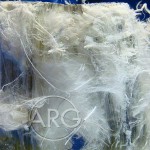 This is the most commonly used form of asbestos and can be found today in roofs, ceilings, walls and floors of homes and businesses. Chrysotile asbestos also was used in automobile brake linings, pipe insulation, gaskets and boiler seals. Although it is more prevalent, some studies show it takes more exposure to chrysotile than other types of asbestos to develop related diseases.
This is the most commonly used form of asbestos and can be found today in roofs, ceilings, walls and floors of homes and businesses. Chrysotile asbestos also was used in automobile brake linings, pipe insulation, gaskets and boiler seals. Although it is more prevalent, some studies show it takes more exposure to chrysotile than other types of asbestos to develop related diseases.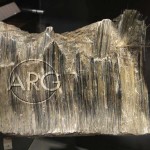 This is known as brown asbestos, and it originates mostly in Africa. It was used most frequently in cement sheet and pipe insulation. It can be found in insulating board (which contained up to 40 percent asbestos), ceiling tiles and in thermal insulation products. Like the other forms of amphibole asbestos, it has needle-like fibers.
This is known as brown asbestos, and it originates mostly in Africa. It was used most frequently in cement sheet and pipe insulation. It can be found in insulating board (which contained up to 40 percent asbestos), ceiling tiles and in thermal insulation products. Like the other forms of amphibole asbestos, it has needle-like fibers. This is blue asbestos and its known for having the best heat resistance. Mined mostly in South Africa, Bolivia and Australia, this is seen as the most dangerous type of asbestos. Crocidolite was commonly used to insulate steam engines, and it was found in some spray-on coatings, pipe insulation and cement products
This is blue asbestos and its known for having the best heat resistance. Mined mostly in South Africa, Bolivia and Australia, this is seen as the most dangerous type of asbestos. Crocidolite was commonly used to insulate steam engines, and it was found in some spray-on coatings, pipe insulation and cement products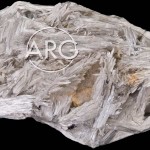 This is not used commercially, but it can be found as a contaminant in chrysotile asbestos, vermiculite and talc powders. It was occasionally found as a contaminant in certain asbestos-containing insulation products, paints, sealants and roofing materials. Tremolite can be white, green, gray and even transparent.
This is not used commercially, but it can be found as a contaminant in chrysotile asbestos, vermiculite and talc powders. It was occasionally found as a contaminant in certain asbestos-containing insulation products, paints, sealants and roofing materials. Tremolite can be white, green, gray and even transparent.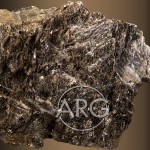 This type was mined primarily in Finland and displays a gray-brown color. It was not commercially used and was rather found as a contaminant. Anthophyllite was most commonly found in composite flooring. Geographically, it occurs in Pennsylvania, southwestern New Hampshire, central Massachusetts, Franklin, North Carolina, and in the Gravelly Range and Tobacco Root Mountains of southwest Montana.
This type was mined primarily in Finland and displays a gray-brown color. It was not commercially used and was rather found as a contaminant. Anthophyllite was most commonly found in composite flooring. Geographically, it occurs in Pennsylvania, southwestern New Hampshire, central Massachusetts, Franklin, North Carolina, and in the Gravelly Range and Tobacco Root Mountains of southwest Montana.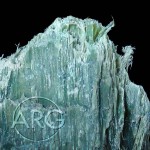 This form of asbestos has a harsh texture and is not as flexible as the others. It is most often found in metamorphic rock. Actinolite was never used commercially, but it can be found as a contaminant in some asbestos products. As with all forms of asbestos, actinolite is a known carcinogen that can cause mesothelioma cancer.
This form of asbestos has a harsh texture and is not as flexible as the others. It is most often found in metamorphic rock. Actinolite was never used commercially, but it can be found as a contaminant in some asbestos products. As with all forms of asbestos, actinolite is a known carcinogen that can cause mesothelioma cancer.